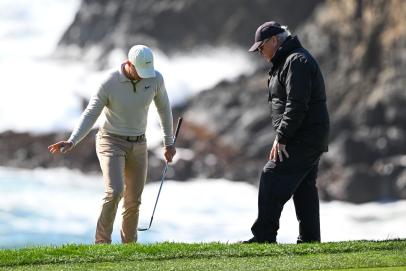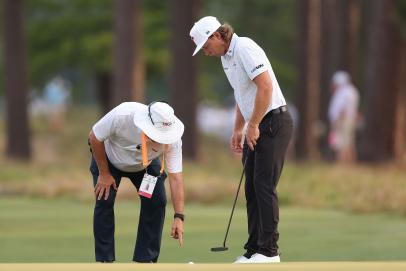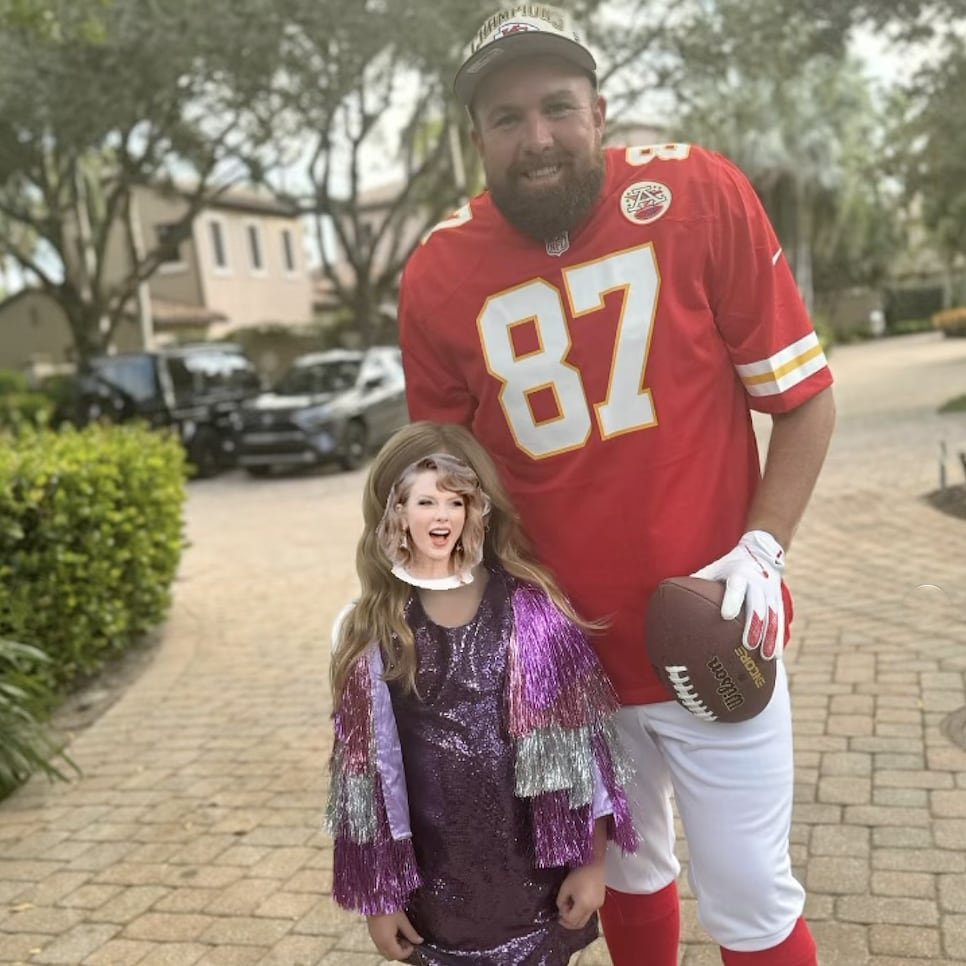7 easy ways to use the Rules of Golf to lower your scores, according to a USGA rules expert – Australian Golf Digest

- by Admin
- November 1, 2024

There’s an old saying that knowledge is power. Well, we’ve found a corollary for golfers: Knowledge of the Rules of Golf can be a powerful asset for anyone looking to keep from giving away too many strokes during a round. While most people see the Rules as limiting what golfers can do on the course, a broader understanding of golf’s dos and don’ts allows players to take advantage of opportunities the Rules also presents—and keep your scorecard from blowing up in the process.
That’s why we reached out to Jay Roberts, Assistant Manager, Rules—Technology, Content & Education for the USGA. For the past 22 months, Roberts has been making videos for the governing body—55 and counting amassing more than 130 million views—in an attempt to help everyday golfers make sense of the Rules of Golf and use them to their advantage under certain circumstances.
Below are seven rules scenarios Roberts shared with us—along with an accompanying USGA video—in which a more complete understanding of the Rules can help you get yourself out of some tricky situations and shoot lower scores.
Free relief from the rough to the fairway
Free relief from the rough into the fairway?
Yes, it’s possible! pic.twitter.com/4V7CPBoyA1
— USGA (@USGA) January 27, 2024
The video shows a player whose ball is in the rough but has a sprinkler head interfering with his stance. Under Rule 16.1, a player is entitled to free relief from abnormal course conditions, including immovable obstructions. The clarification the video references specifically explains that when taking relief, it may result in the player getting better (or worse) conditions. So a golfer’s ball that was in the rough can be dropped in the fairway—the Rules treat the fairway and rough the same, both being part of the “general area”) provided it’s within one club-length of the nearest point of complete relief.
“The reason why I think this video has done so well is there’s shock factor to it—wow I can’t believe that’s allowed,” Roberts said. “One of the biggest misconceptions about this is that people think this is ‘improving your lie.’ Improving your lie has a specific meaning in the Rules of Golf. Your ‘lie’ is the spot your ball is at rest on and includes any growing or attached natural object touching the ball or right next to it, like a tuft of grass. Improving your lie would be stepping on that tuft of grass behind your ball to make it easier to make good contact on your next shot. But, when you lift the ball to take relief, you don’t have a lie anymore—until you drop the ball. So this isn’t ‘improving’ your lie, the Rules are simply allowing you to play from a different spot than where your ball originally came to rest. That’s the big difference there.”
More From Golf Digest Rules of Golf Yes, the ‘leaf rule’ is actually a real thing. Here’s what the rules say about it  Rules Review Can you do that? Take our latest rules quiz and find out
Rules Review Can you do that? Take our latest rules quiz and find out  Rules What goes on inside the rules office at a major championship? We got a glimpse Make stroke-and-distance penalty less penal
Rules What goes on inside the rules office at a major championship? We got a glimpse Make stroke-and-distance penalty less penal
Blast one OB?
Using the rules can help with your next shot! pic.twitter.com/eRvbdDeUMy
— USGA (@USGA) February 3, 2024
The situation highlighted here is a player whose drive is stuck a few feet behind a tree. The golfer tries to play for a hook with his second shot but pushes it right and it goes out of bounds. Under Rule 14.6 when your ball goes OB you must take a stroke-and-distance penalty. But when you drop your ball to put it back in play, that rule allows you to drop within a full club-length of the spot you played your original shot from. Taking that full club-length could be huge in giving you a better lie/stance/angle to be more successful with that next shot.
“This is one of my favorites” Roberts said. “For whatever reason people when they’re in this situation fail to recognize they have a relief area. Several weeks ago, I was playing with my father-in-law, and he had an awkward lie just above a bunker, ball well above his feet, one foot in the bunker and one out. And he hooked it OB. He drops it right next to where he played from, giving himself the same awkward shot to try again. But if he used his relief area, one club-length, he would have had a normal shot for his stroke and distance play. So there is just this failure to remember you get a full relief area. Take advantage of it … Get to some better turf. Get a better angle on your putt. Use that relief area.”
Ground under repair relief
Get those feet out of the repair zone… take free relief! pic.twitter.com/xHs9sG5Cro
— USGA (@USGA) March 23, 2024
This is sort of similar to relief from immovable obstruction in that taking relief could mean better conditions for your next shot.
Most golfers know they can get free relief when their ball comes to rest inside an area marked as ground under repair. Fewer, however, realize that they can also get relief if their ball isn’t inside the GUR area marked with white paint but their feet are when they take a stance to play their next shot under Rule 16.1. Where this can come in handy is situations where your ball has wound up in a divot hole or a thin spot in the fairway. Or if your ball is in a gnarly lie in the rough perhaps. Like the earlier example, you have one club-length to drop the ball and if that means it will be in a better spot than it was previously, that’s a welcome break.
“For whatever reason there is this mental disconnect in the golfer’s mind that simply standing in grass that has a circle around it, doesn’t warrant free relief,” Roberts said. He noted that during a member-guest event at his club, there was an area marked as GUR and he had three different people approach him after the opening round to ask about if standing in the white area still entitled them to relief.
“This is just highlighting what it means to have interference, whether with your lie, stance or swing, because you get to take advantage and the benefit of the relief if you want to.”
Raking bunker before taking a drop
Raking a bunker *before* a shot? Yes, it’s possible! pic.twitter.com/3aja0gE8An
— USGA (@USGA) October 12, 2024
You’re in a bunker and play a shot, only to hit it thin, skull it over the green and watch the ball sail out of bounds. Under the stroke-and-distance penalty, you have to drop in the sand but it’s all messed up from your previous shot. The good news is Rule 12.2 allows you to clean things up before your drop. It explains that there are no restrictions on raking a bunker after a ball is played out of the bunker. So long as the ball is out of the bunker, you can rake before taking your drop and putting the ball back into play in the bunker.
“While it’s not a common situation,” Roberts says, “this one is intriguing as well as helpful for your game should you need it. Who wouldn’t want a cleanly raked area of the bunker to play their next shot from?! This can be particularly helpful if your original ball was in a divot/footprint or was just overall messy.”
Relief when a righty takes a lefty shot
Are you entitled to free relief if you want to attempt an “abnormal” shot? 🤔 pic.twitter.com/ozUYabCNtK
— USGA (@USGA) October 19, 2024
This video lays out a scenario where a golfer’s drive leaves his or her ball up near a tree. There’s no way to take a true right-handed swing at the ball, so the right-handed golfer decides to play the shot left-handed. In taking his stance, however, his foot is on a cart path and the question arises: Can he get relief?
The answer is yes because under Rule 16.1 playing an abnormal stroke doesn’t preclude you from taking relief so long as the stroke you’re trying to make isn’t “clearly unreasonable.”
Interestingly, too, after you go through the proper steps for finding the nearest point of complete relief and drop your ball back into play, you can proceed to play the next shot with your normal right-handed stroke. And even more amazing: If when you take your stance to play the shot right-handed, but another obstruction interferes with that stroke, the player can take relief yet again.
It’s OK to practice between holes (really!)
Is there a penalty for practicing between holes? 🤔 pic.twitter.com/QzqjasC04I
— USGA (@USGA) October 28, 2024
Golf fans who watch match-play tournaments like the Ryder Cup or U.S. Amateur on TV have probably seen competitors practice putts on greens after a hole has been finished. Commentators often leave the impression that this is fine in match-play events but not in stroke-play tournaments. Yet that’s actually a big misconception.
Rule 5.5 makes no distinction between the two formats, only restricting the place where practice putting and chipping is allowed to the putting green on the hole just completed, any practice green (Rule 13.1e) at the course or the next tee. The main caveat: don’t unreasonable delay play and don’t play any shots from a bunker.
So why don’t you see tour pros doing this on the PGA Tour or LPGA? Because the tours use a Model Local Rule I-2 that prohibits players practicing putting or chipping.
From OB to the fairway
Hit one out of bounds?
Just drop in the fairway (with this Local Rule)! pic.twitter.com/LOTnkz935z
— USGA (@USGA) October 26, 2024
As part of the USGA/R&A rules modernization in 2019, the governing bodies made available to courses Model Local Rule E-5 as an option for recreational golfers who hit a ball out of bounds. Rather than replay from a tee box that gives you the creeps—maybe there’s a forced carry or a dogleg that just doesn’t suite your swing—you can safely put your ball in play in the fairway at roughly the spot where your first ball went OB.
E-5 can only be used if your course allows it, and should not be used in competitions. It calls for you to estimate where your ball went out of bounds and then find a point in the fairway nearest that ball reference point. From the fairway reference point, you can create a relief area one club-length into the fairway, drop your ball there and play on. The down side is that you have to add two penalty strokes, so when you’re playing that shot from the fairway you’re hitting your fourth shot. But think of it this way: using E-5 is the equivalent of taking stroke-and-distance relief but guarantees that your next ball would be in play.
• • •
To learn more Rules like these, check out the USGA’s free online video course at www.usga.org/Rules101
MORE GOLF DIGEST RULES REVIEWS
What do I do if my ball just hit another ball on the green?
Can you chip a ball on the tee while waiting for the group ahead of you to play?
I hit myself with my own ball. Is that a penalty anymore?
What exactly is an embedded ball?
I hit a horrible shot. I’m way better off if I don’t find it. Can I just declare it lost?
When does the three-minute search time for a lost ball actually begin?
Does a ball have to be unplayable to declare it unplayable?
I accidentally hit my ball with a practice stroke … does it count?
I’m on the green. My opponent is not. Who’s away?
I bent my putter and it actually works better. Can I still use it?
Somebody just picked up my golf ball! Now what?
This article was originally published on golfdigest.com
The Latest News
-
November 1, 2024Shane Lowry as Travis Kelce, a Finau family ‘Thriller’ and more of the best Halloween costumes from around golf – Australian Golf Digest
-
November 1, 2024Brittany Lincicome becomes latest LPGA major winner to announce she’s pulling back on her schedule after 2024 – Australian Golf Digest
-
November 1, 20247 easy ways to use the Rules of Golf to lower your scores, according to a USGA rules expert – Australian Golf Digest
-
November 1, 2024You won’t believe how much this legendary golf figure is bidding to buy Scottie Scheffler’s old car (with 200,000 miles) – Australian Golf Digest
-
November 1, 2024Australian Golfer Jeffrey Guan Loses Eye In Freak Accident




